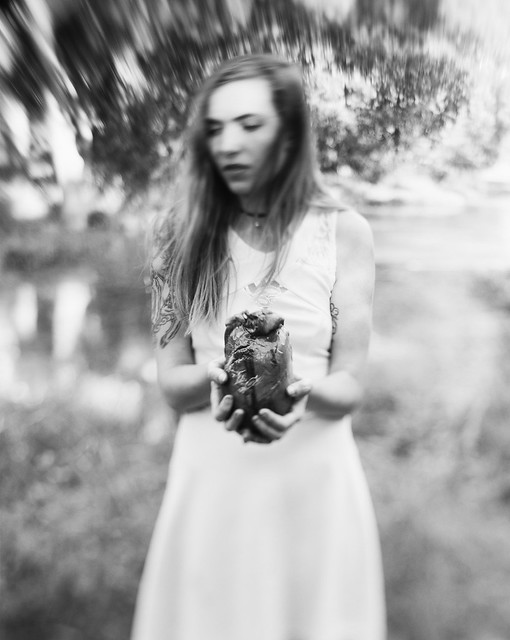A little more detailed reply, well a lot longer if not actually more detailed.




I hope that it's some help.
We don't always see clearly as photographers because we are always looking for the absolute, that there is an action and an affect associated with it. But this is not entirely true.
I always edit for print and have a little gallery of around 6 shots in my hall that I rotate when the mood takes me. It's mainly for me to see and gain a more dispassionate look than to show, but it's interesting to gauge people's reactions. What is universally true is that photographs do not show an absolute or *what I saw*, what people tend to see is what the images remind them of. Things and experiences in their own memory.
If we take a portrait and show it in absolute sharpness then we show the individual. But people do not understand the random individual and so interpret the expressions in line with the expressions they've learnt through people they do know. When they do know the individual, can identify with the expression and recognise the expression to be common to that person then you get comments like, "that's caught them well" or "they look really natural."
The problem with taking absolute images is that the expressions that are unique to one person do not readily transfer, or are able to be read, by someone who doesn't know them. A technique artists use is to *de-familiarise*. In doing so it actually has the opposite effect to that you may think; it doesn't make the image more ambiguous but clearer because it allows the artist to speak in a language that's less ambiguous. What it also does is counter the viewer's natural tendency to just glance and jump to conclusion, see in an image something that they already know and is familiar to them. What they have to do is look a little closer to extract a meaning or discover how they relate to it.
In doing this the artist can generally reveal the things you don't normally see, show you something different.
What I see in many images on forums is photographers demonstrating their ability to de-familiarise, make the image look different. But in doing it they are really only demonstrating that they haven't observed or understood the subject because they reveal nothing new, nothing other than their ability not to represent. In fact much of it relies on viewers *not* looking and *not* seeing it correctly, jumping to assumption based on their experience because the image reveals nothing and makes little sense on it's own.
You can use soft focus to much the same effect. Cameron's portraits of older men show not individual lines of age and experience but more generic ones and so makes her interpretation, or what see sees, clearer to the viewer. With the young we see the skin as softer so again your expression is clearer. But it is not an absolute action that produces and absolute effect, soft focus doesn't always connect your viewer with emotion *x*, we still rely on the viewer interpreting it and we still need to be able to show something that they didn't necessarily notice. We still need to observe the subject and see in it something we wish to show, not just point the camera and add an effect which the viewer will *see* as emotion *x*.
I'm not sure I've got this right, but it is something I have seen in other portraits. It is an observation shown to me and resides in most children's faces because they are not symmetrical, (
hint - cover the right side of the face and view only the left then cover the right side, what do you see?). Hopefully it's an example of revealing observation:

















